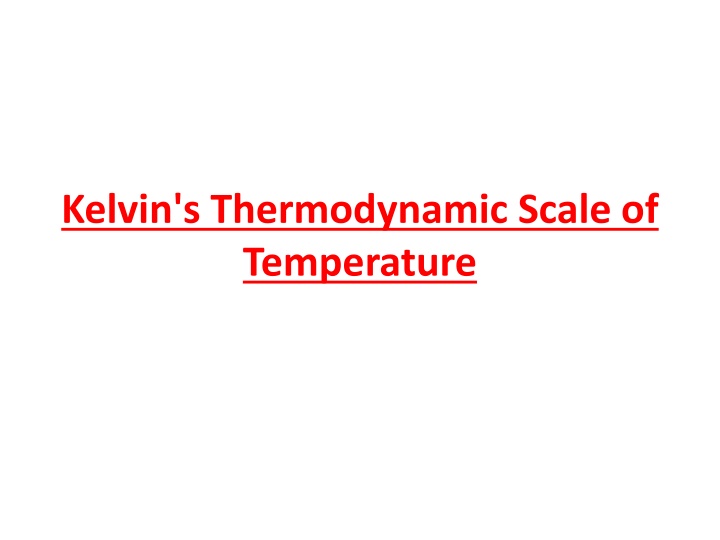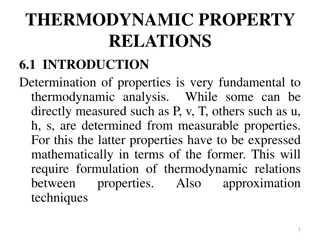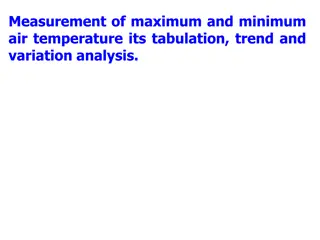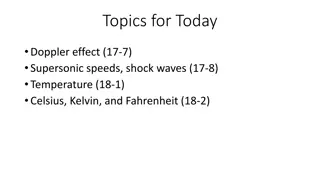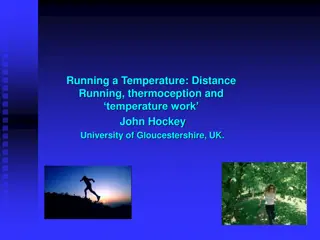Kelvin's Thermodynamic Scale of Temperature
Lord Kelvin proposed a new temperature scale based on the efficiency of Carnot's reversible engine, independent of the working substance. This scale, known as the absolute scale of temperature, aligns with the ideal gas scale. The theory behind this absolute scale relates the efficiency of a reversible engine to the heat absorbed and rejected at different temperatures.
Uploaded on Feb 17, 2025 | 2 Views
Download Presentation

Please find below an Image/Link to download the presentation.
The content on the website is provided AS IS for your information and personal use only. It may not be sold, licensed, or shared on other websites without obtaining consent from the author.If you encounter any issues during the download, it is possible that the publisher has removed the file from their server.
You are allowed to download the files provided on this website for personal or commercial use, subject to the condition that they are used lawfully. All files are the property of their respective owners.
The content on the website is provided AS IS for your information and personal use only. It may not be sold, licensed, or shared on other websites without obtaining consent from the author.
E N D
Presentation Transcript
Kelvin's Thermodynamic Scale of Temperature
The efficiency of reversible Carnot's engine depends only upon the two temperatures between which it works and is independent of the properties (nature) of working substance. Using this property of Camot's reversible engine which solely or absolutely depends on temperature and nothing de Lord Kelvin in 1848 suggested a new scale of temperature, known as 'absolute scale of temperature.
Lord Kelvin worked out the theory of such an absolute scale, called the Kelvin's work or thermodynamic scale and showed that it agrees with the ideal gas scale.
Theory: Suppose a reversible engine absorbs heat Q1 at temperature 1 and rejects the heat Q2 at temperature (measured on any arbitrary scale) then since the efficiency of the engine is a function of these two
